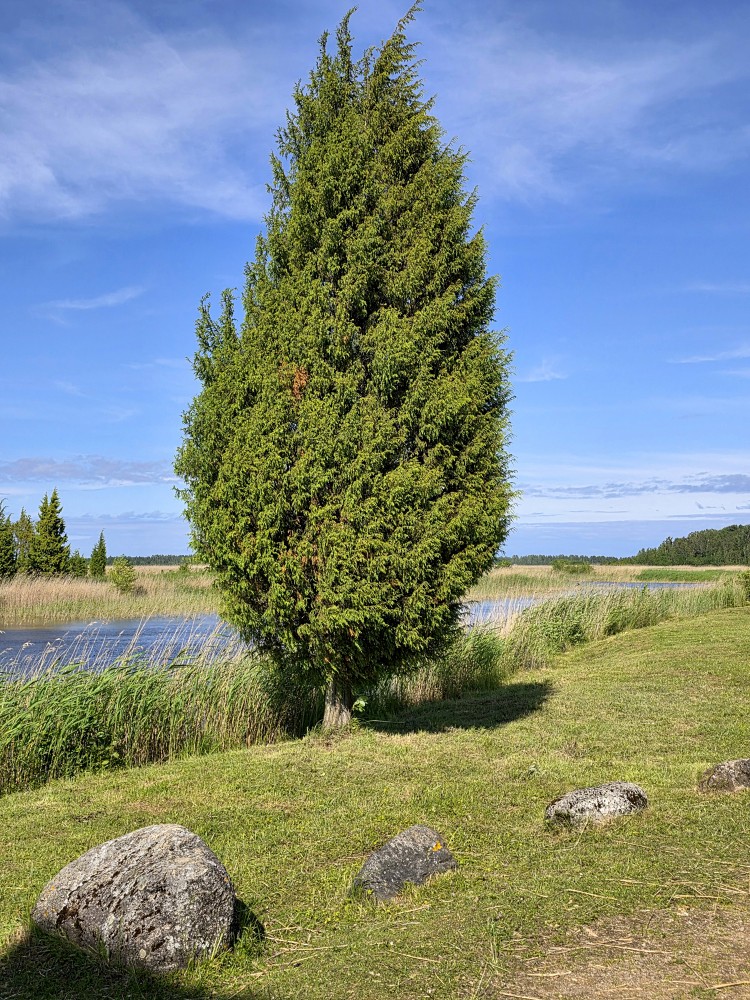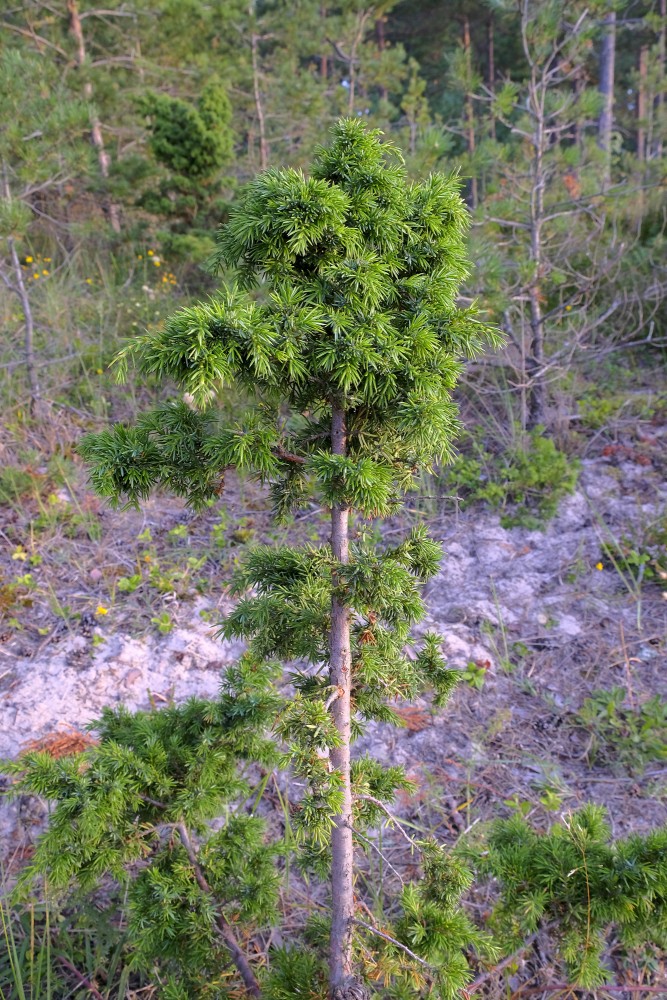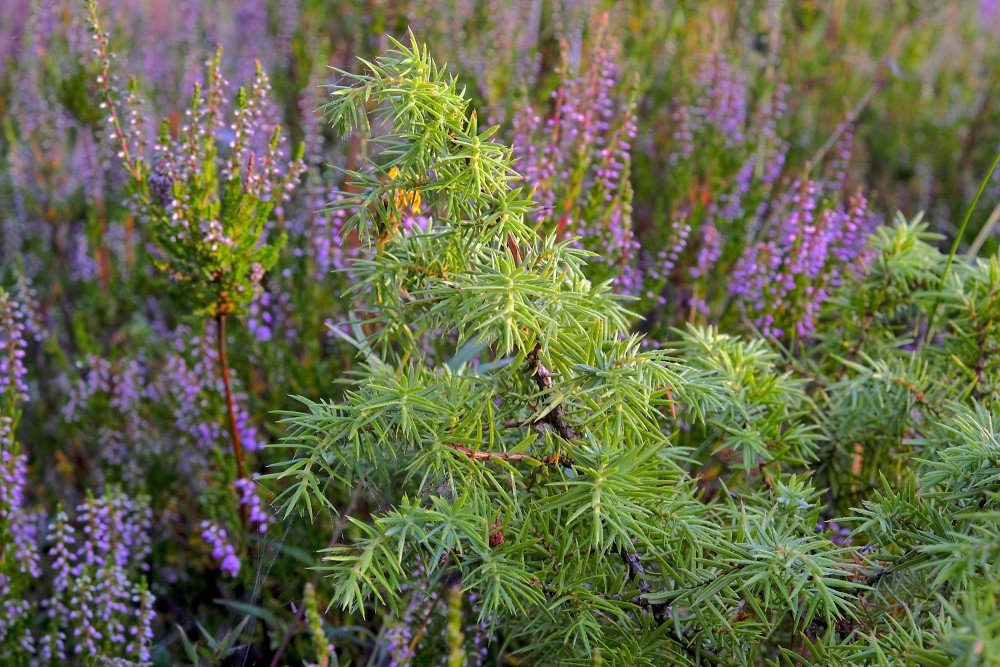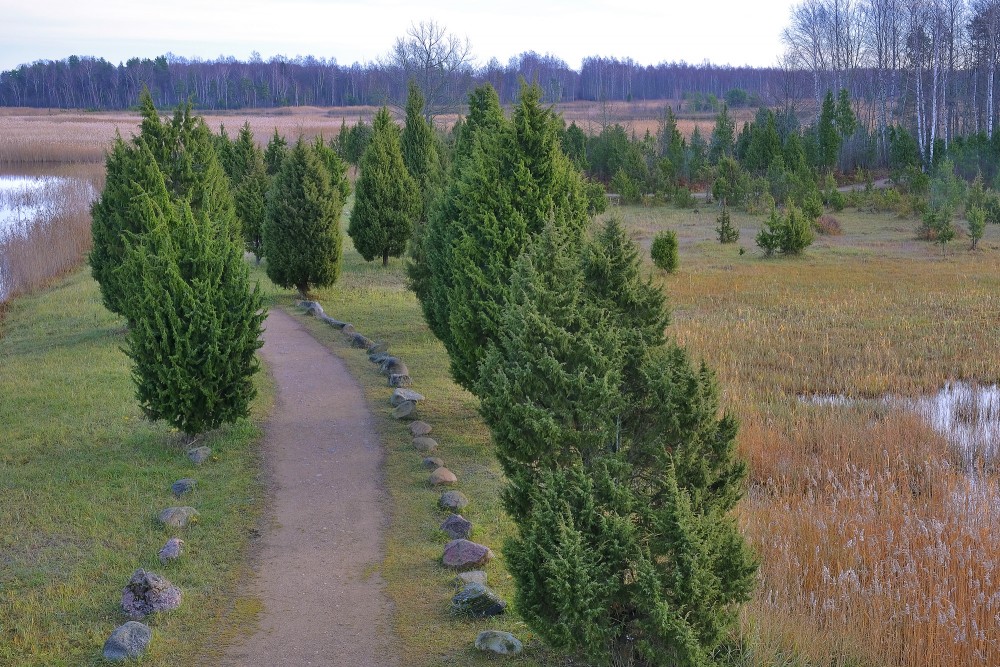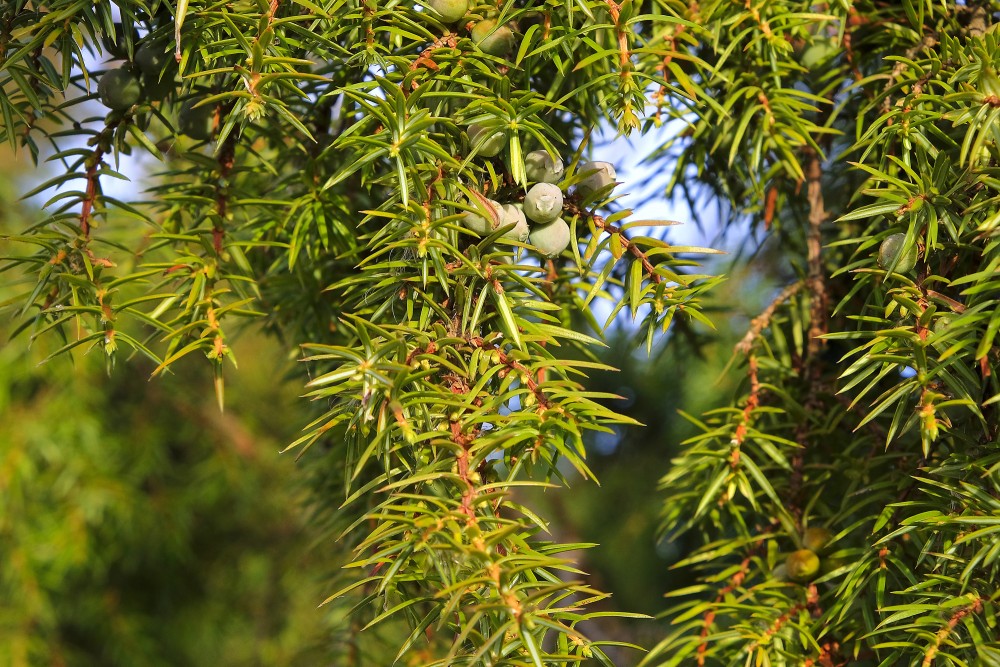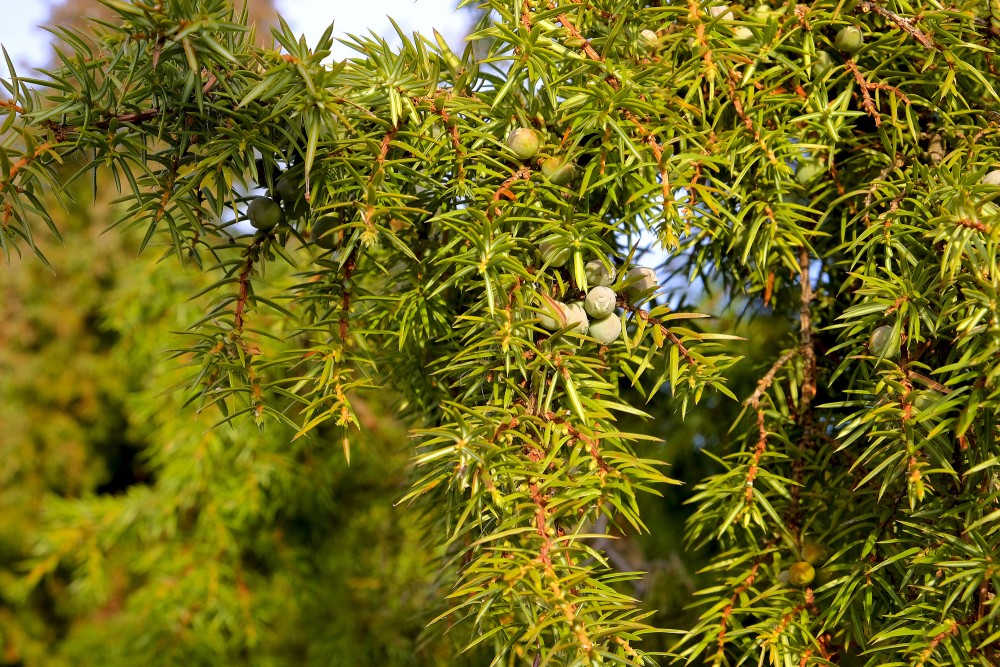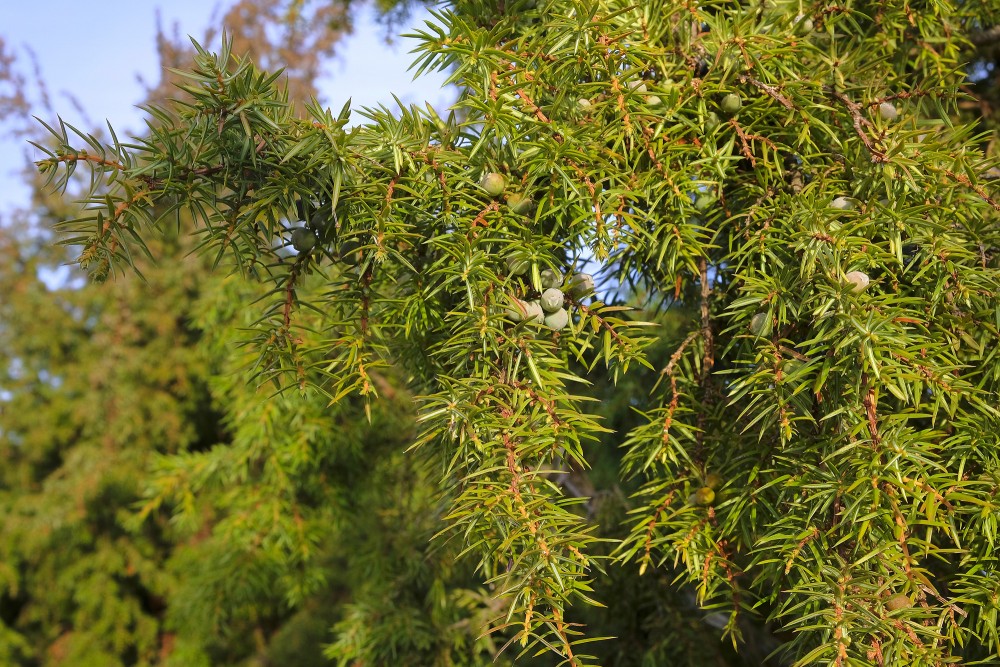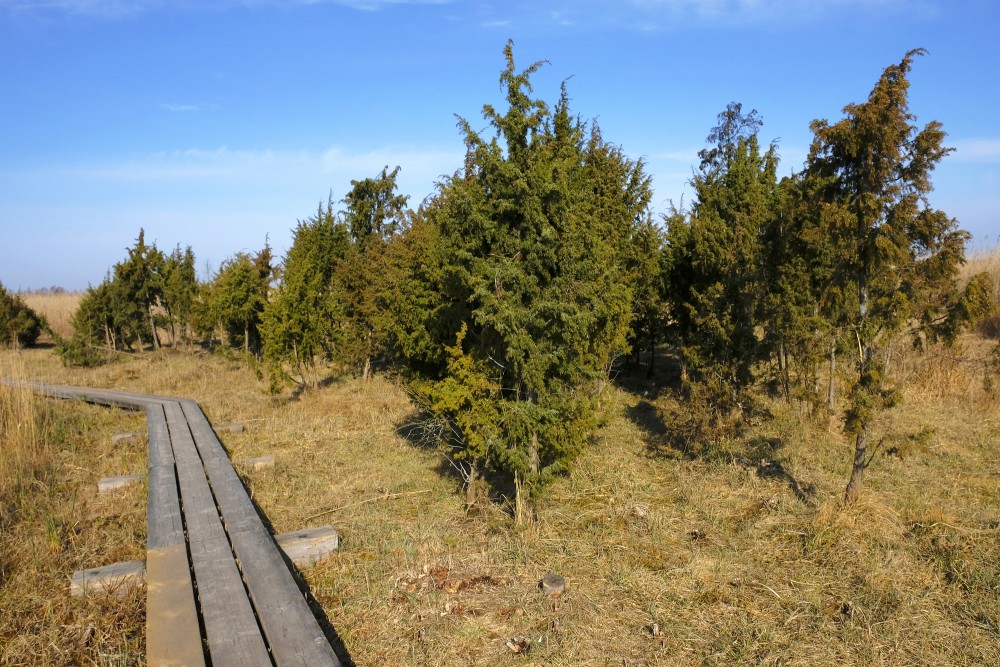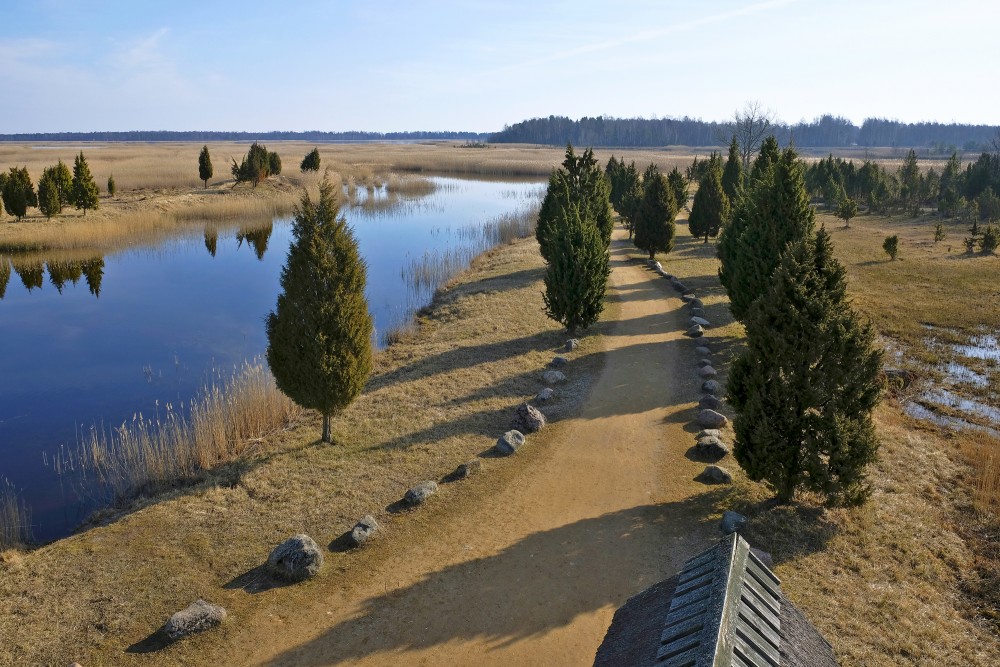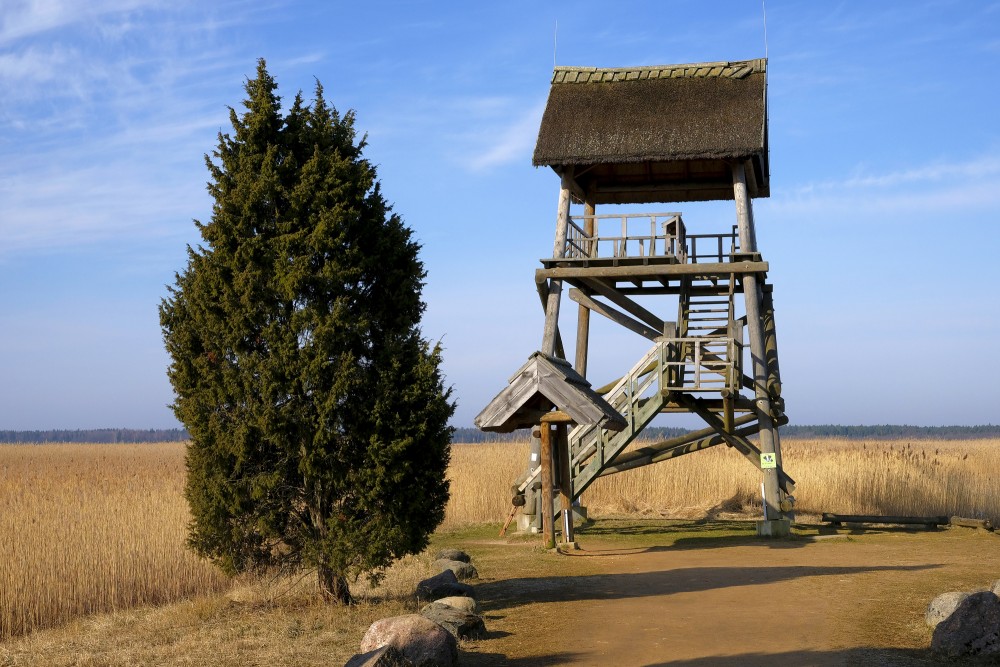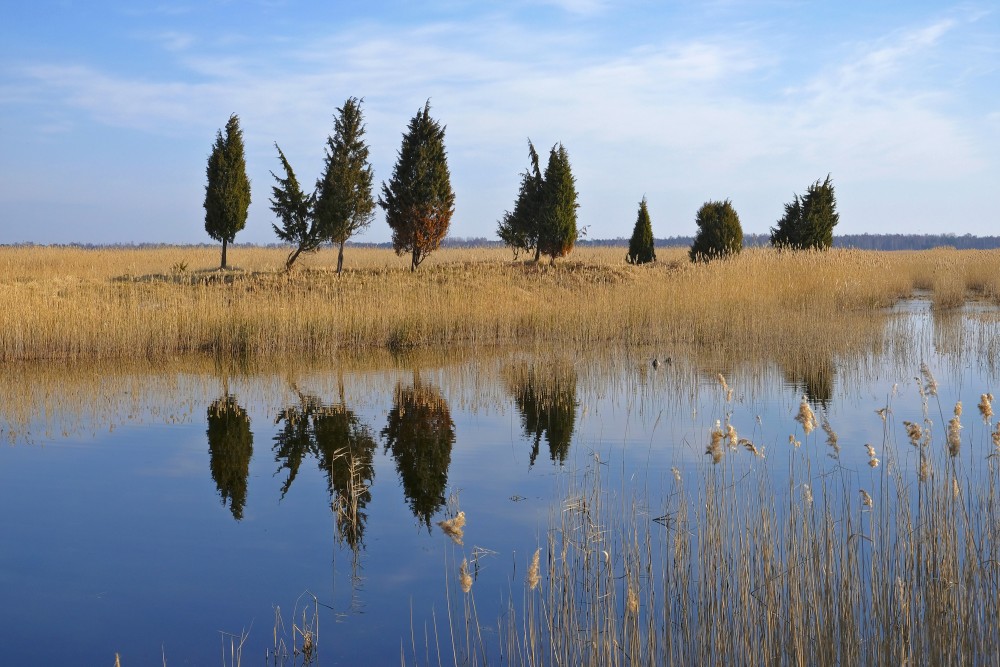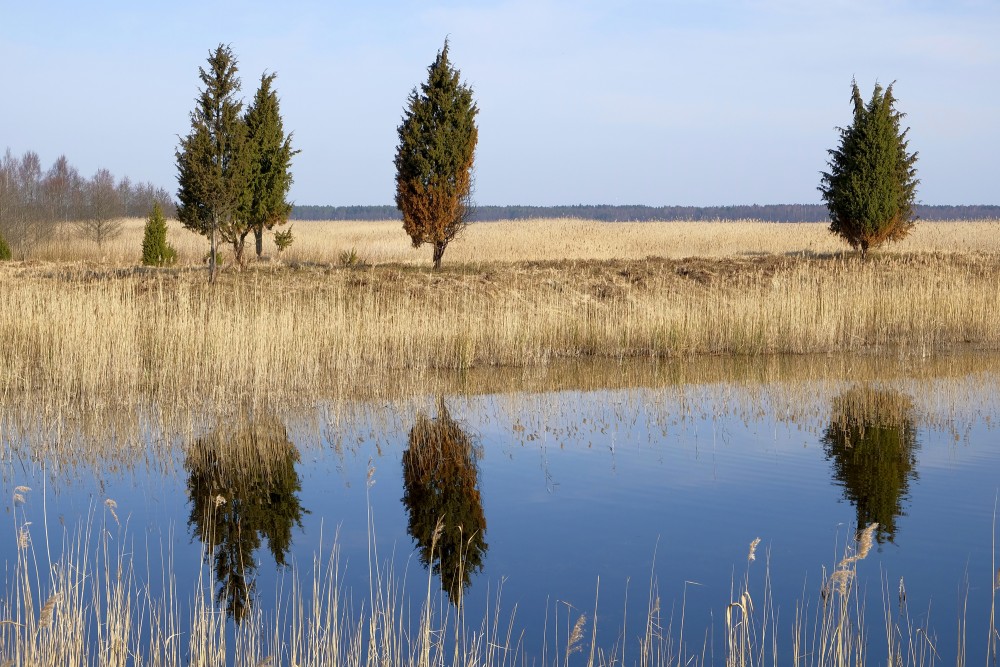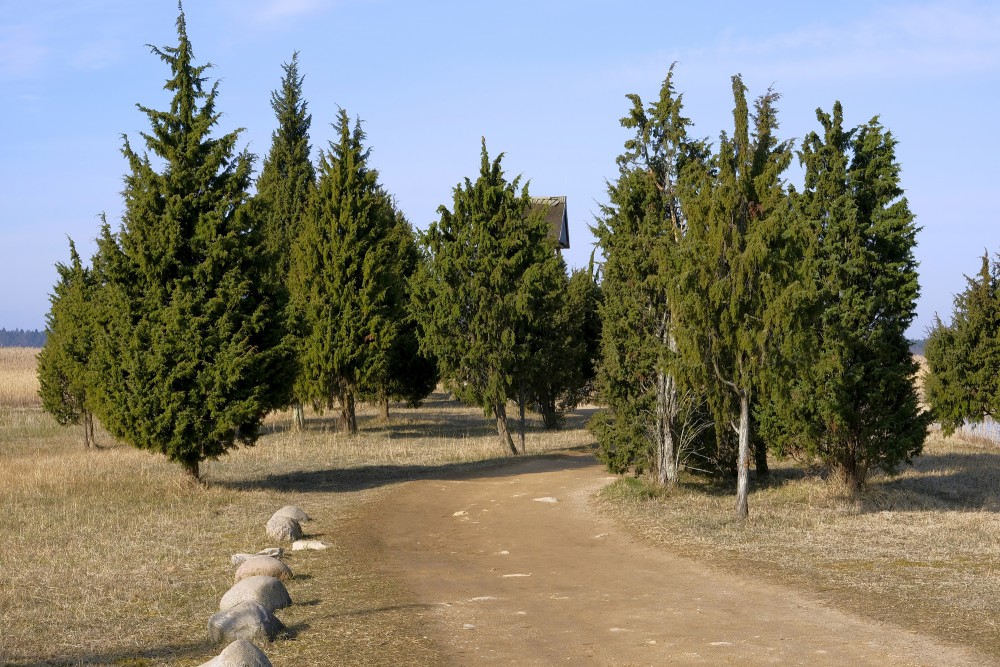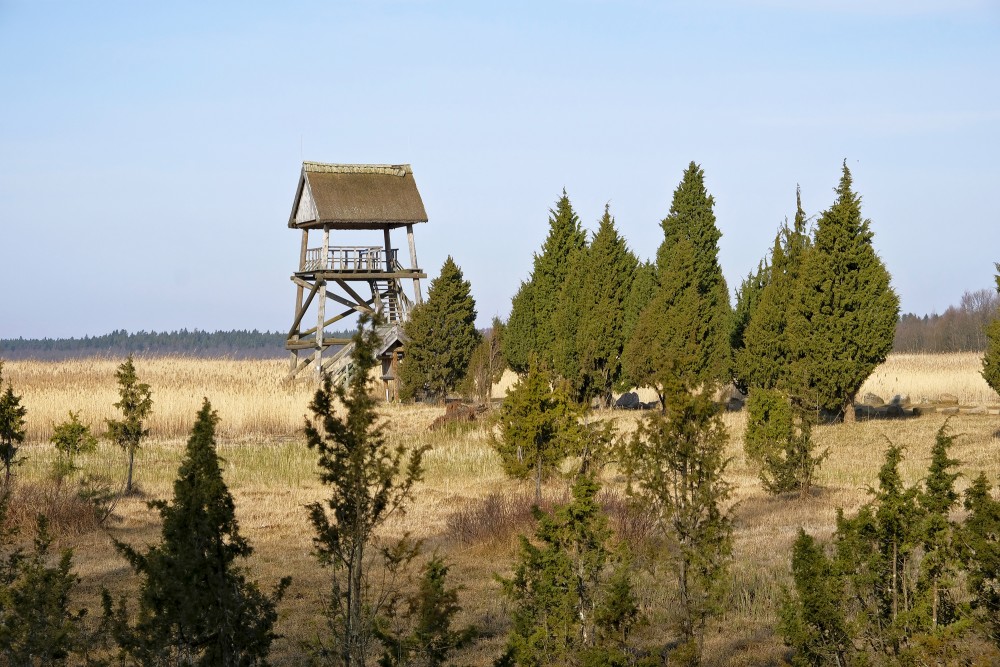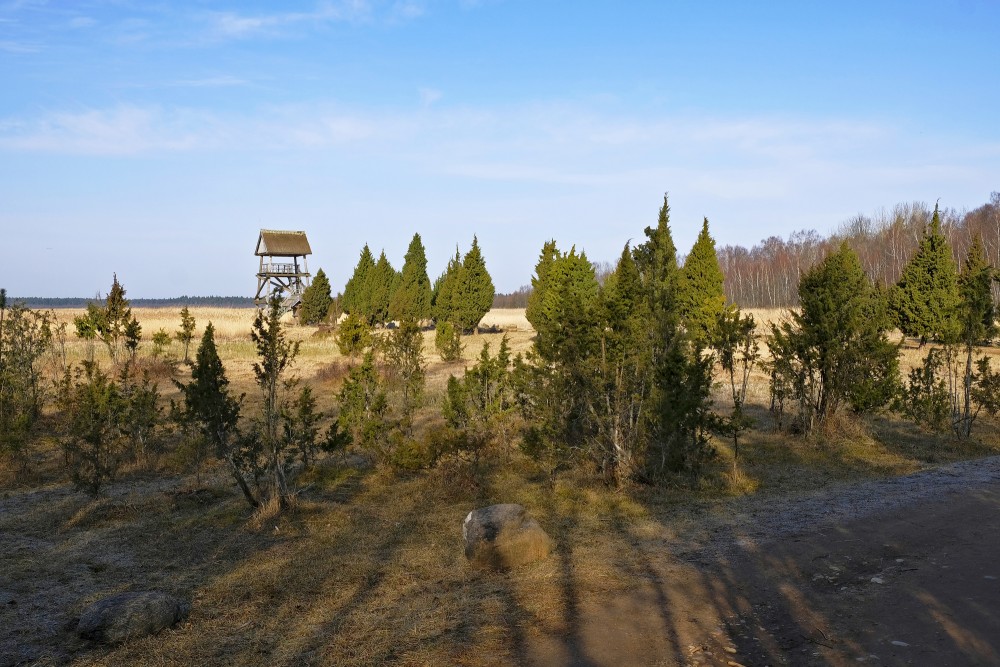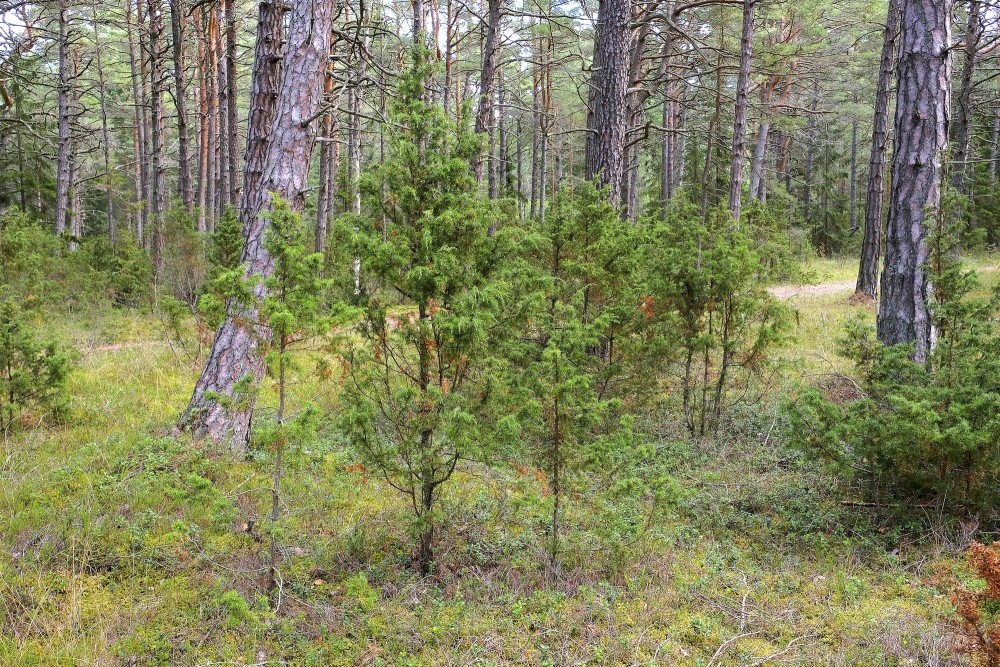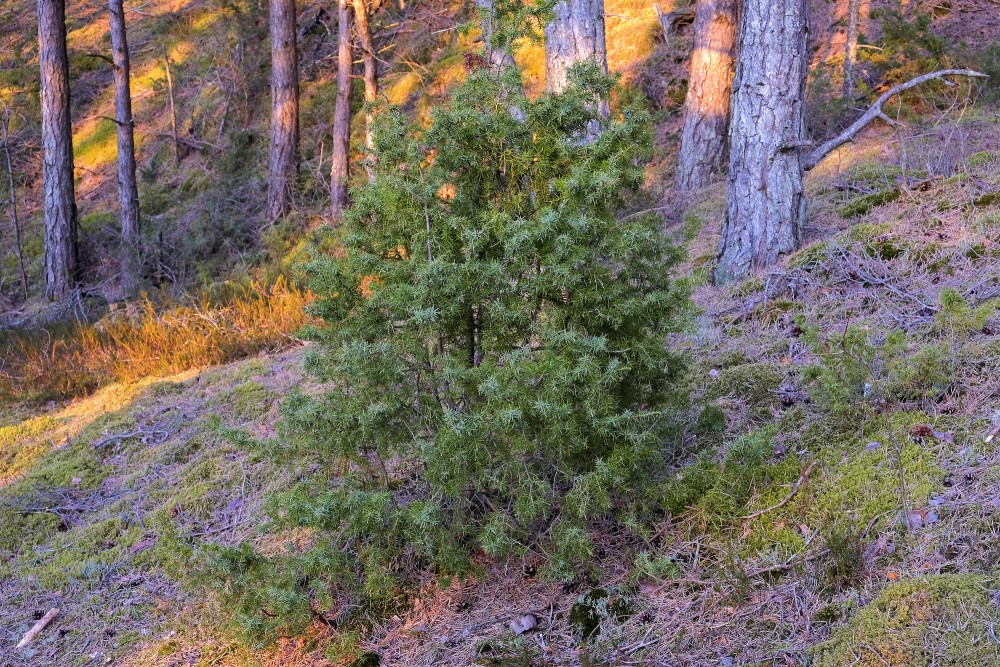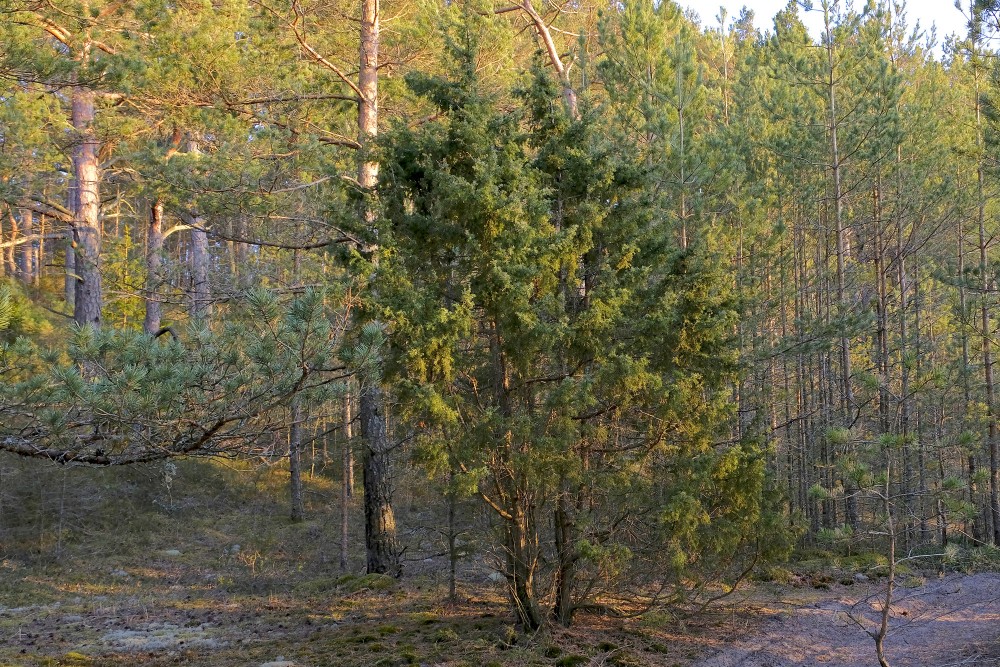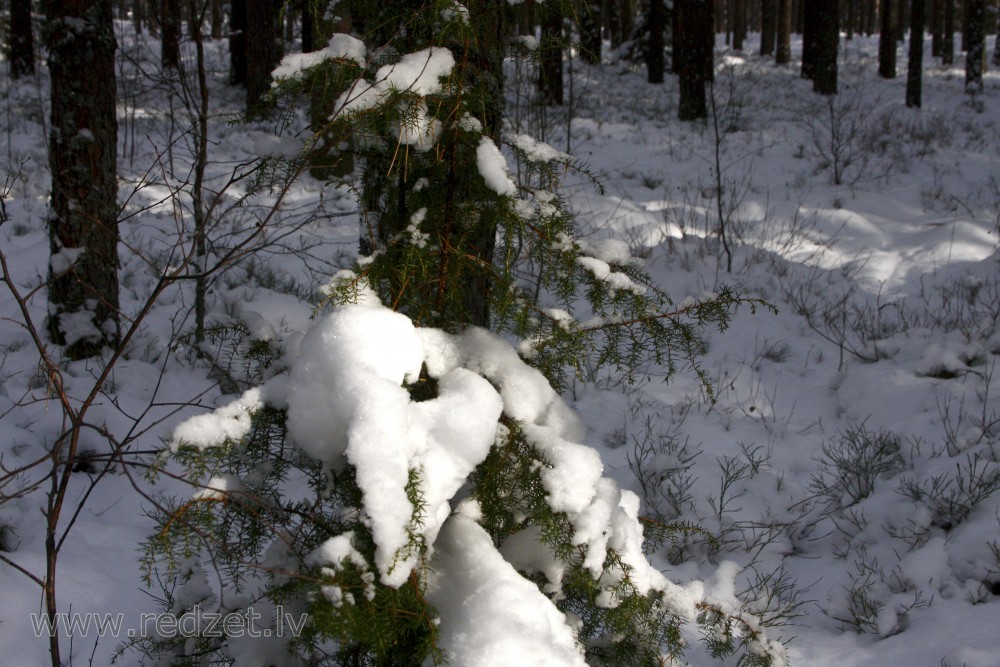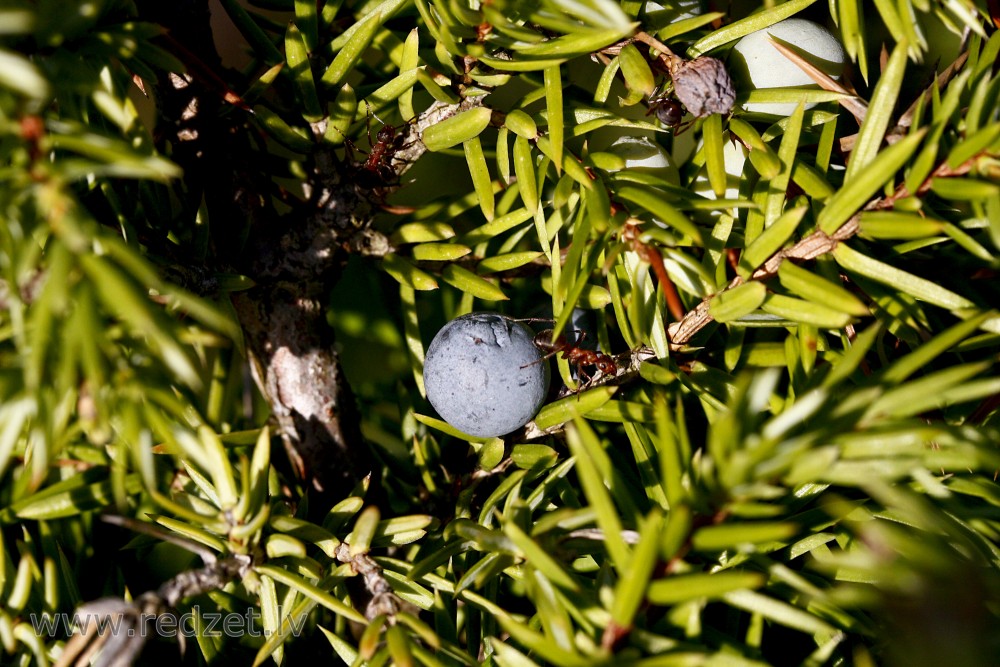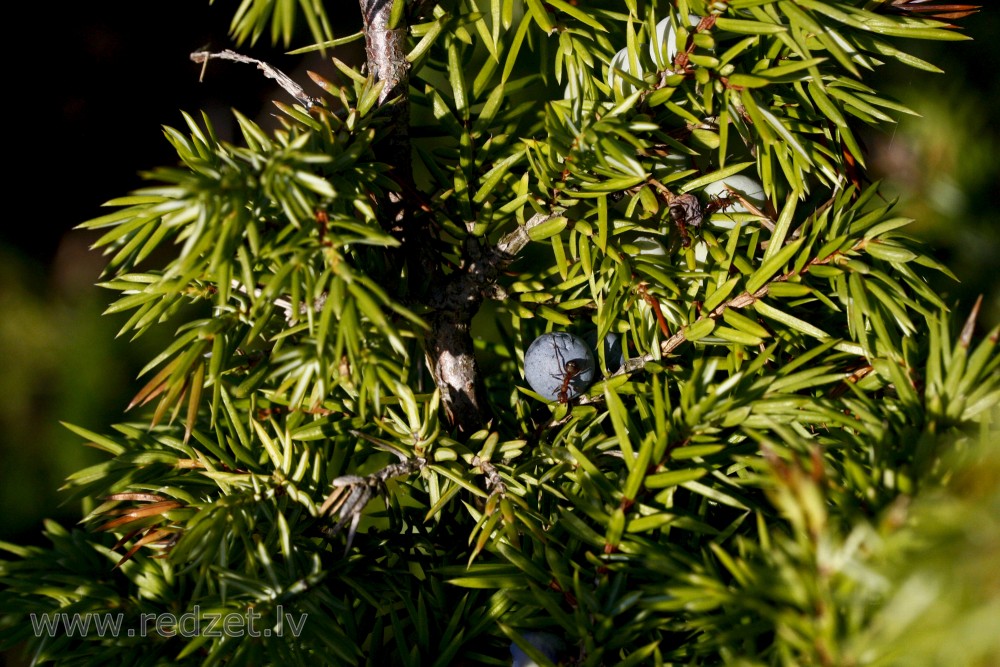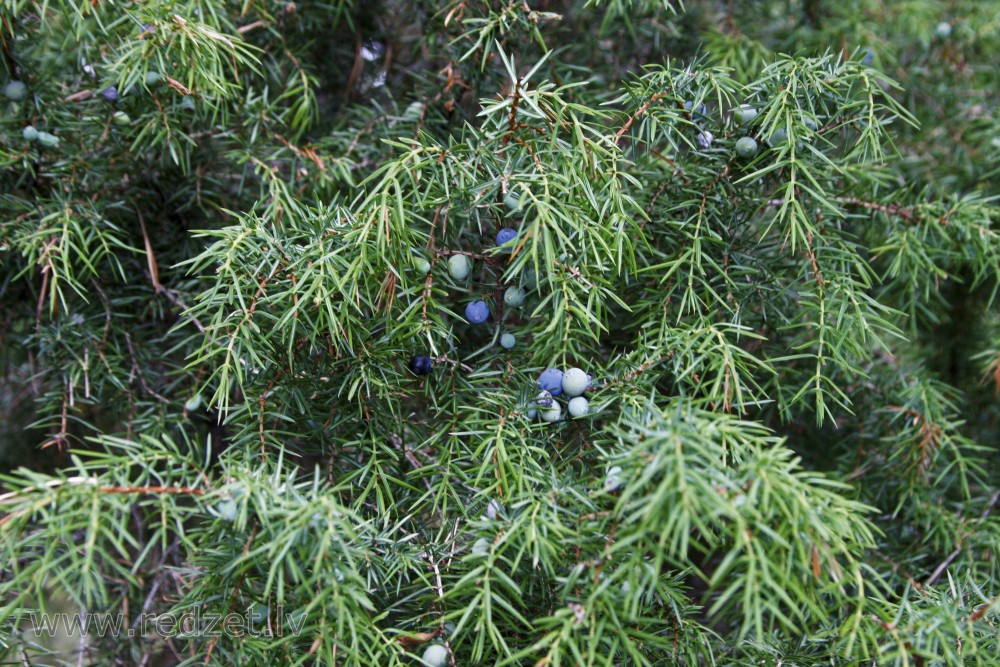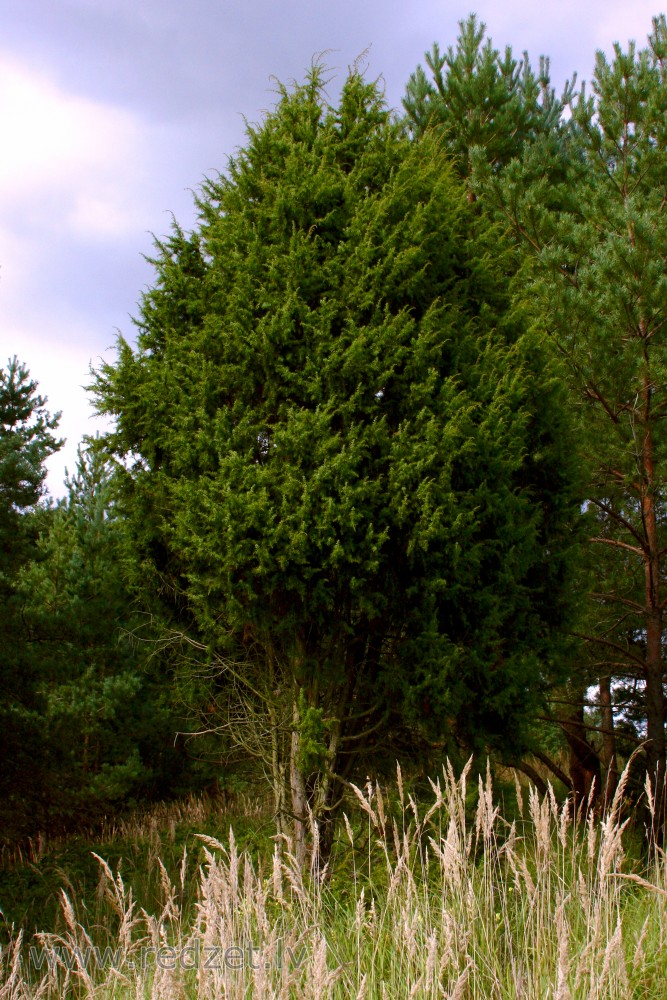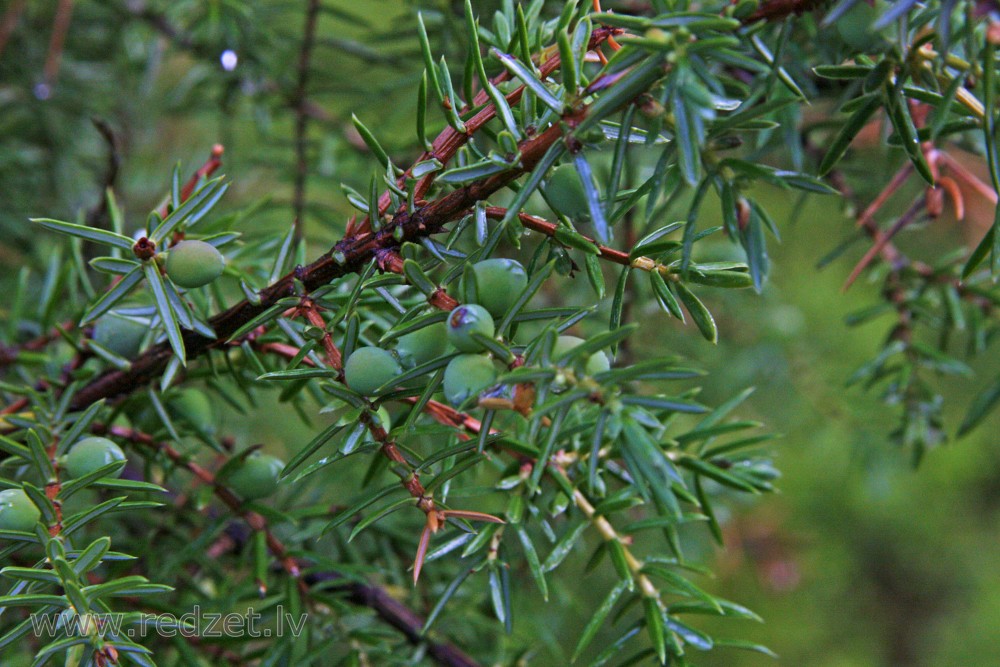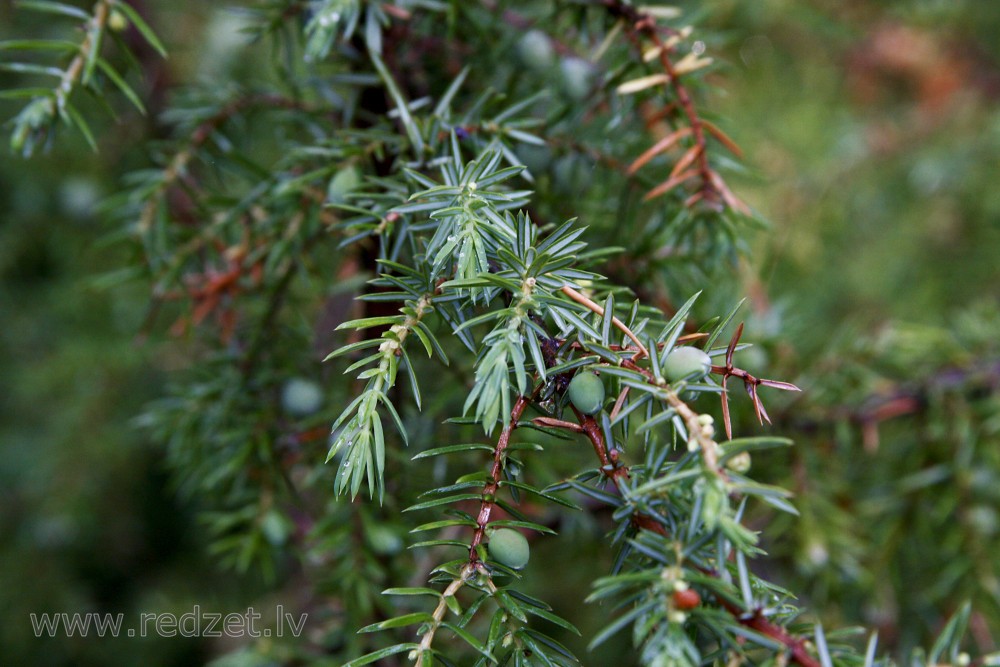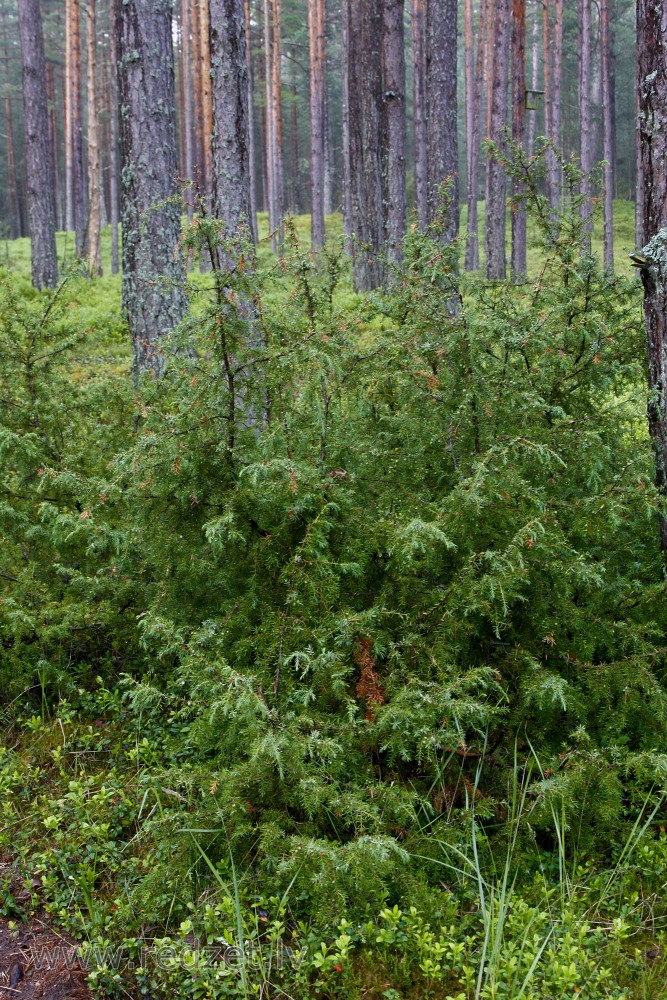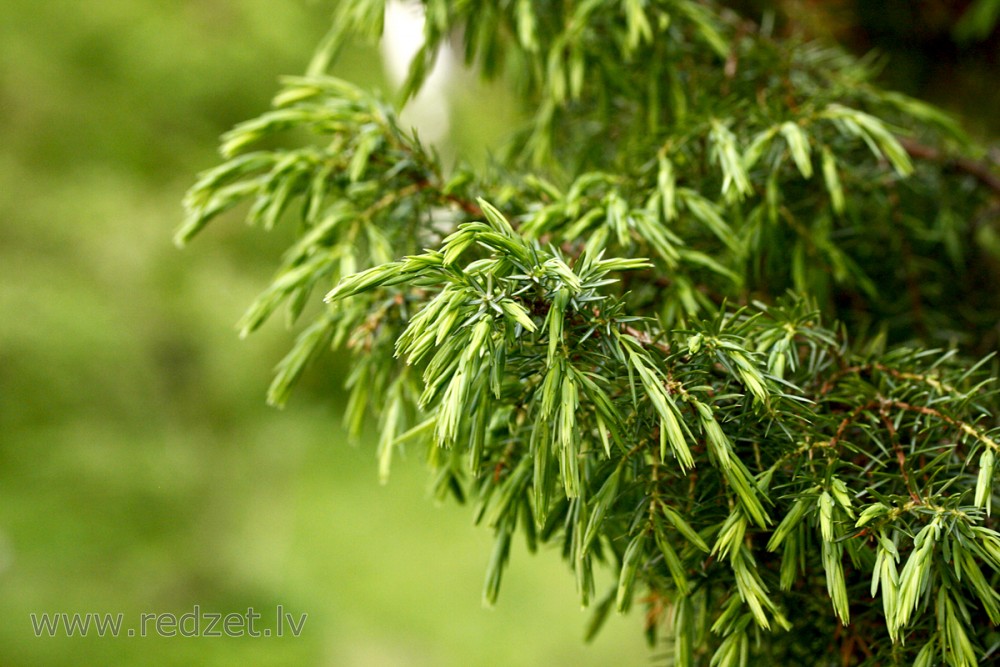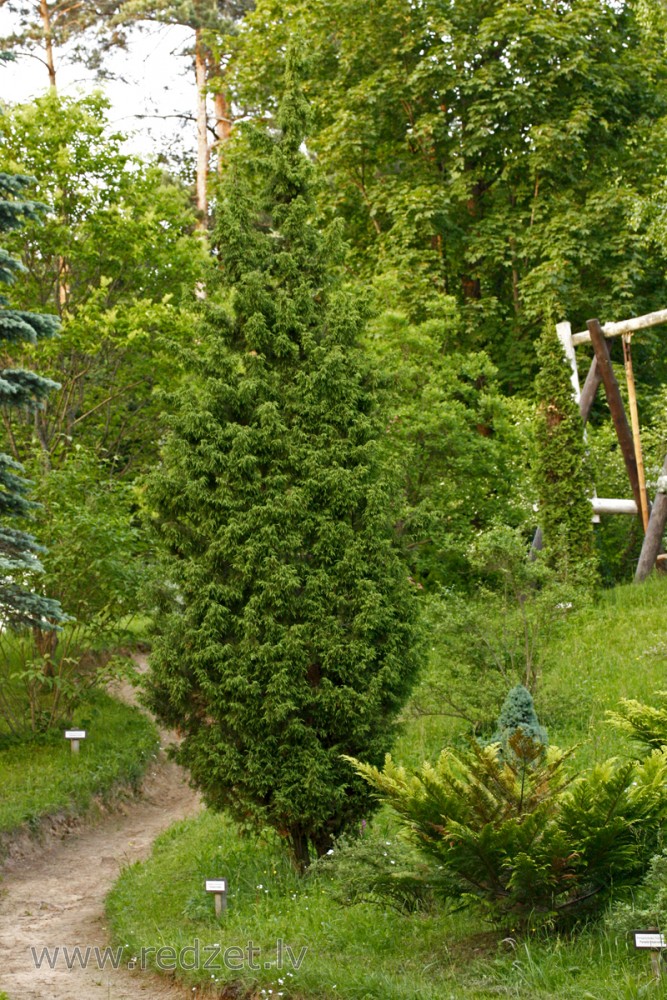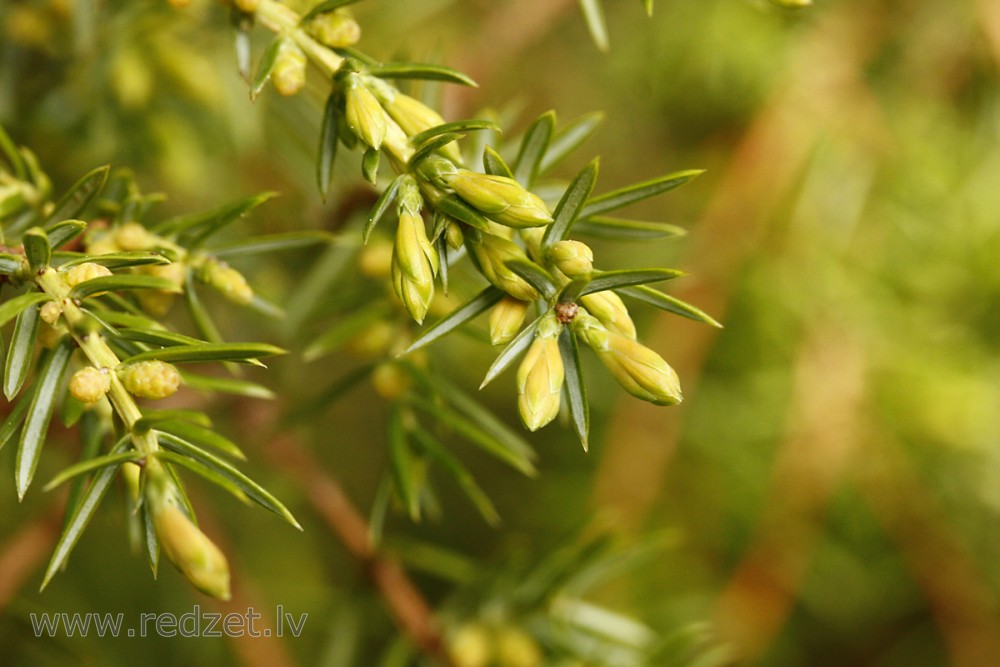Juniperus communis (Common juniper)
Juniperus communis, the common juniper, is a species of conifer in the genus Juniperus, in the family Cupressaceae. It has the largest geographical range of any woody plant, with a circumpolar distribution throughout the cool temperate Northern Hemisphere from the Arctic south in mountains to around 30°N latitude in North America, Europe and Asia. Relict populations can be found in the Atlas Mountains of Africa.
| Juniperus communis | |
| Kingdom: | Plantae |
| Division: | Pinophyta |
| Class: | Pinopsida |
| Order: | Pinales |
| Family: | Cupressaceae |
| Genus: | Juniperus |
| Section: | Juniperus sect. Juniperus |
| Subsection: | Juniperus subsect. Juniperus |
| Species: | J. communis |
Description
Juniperus communis is a small coniferous evergreen tree or shrub, very variable in form, ranging from 10 m (33 ft)—rarely 16 m (52 ft)—tall to a low, often prostrate spreading shrub in exposed locations. It has needle-like leaves in whorls of three; the leaves are green, with a single white stomatal band on the inner surface. It never attains adult foliage. It is dioecious, with male and female cones, which are wind pollinated, on separate plants.
The fruit are berry-like cones, initially green, ripening in 18 months to purple-black with a blue waxy coating; they are spherical, 4–12 mm (0.16–0.47 in) diameter, and usually have three (occasionally six) fleshy fused scales, each scale with a single seed. The seeds are dispersed when birds eat the cones, digesting the fleshy scales and passing the hard, unwinged seeds in their droppings. The male cones are yellow, 2–3 mm (0.079–0.118 in) long, and fall soon after shedding their pollen in March–April.
Subspecies
As to be expected from the wide range, J. communis is very variable, with several infraspecific taxa; delimitation between the taxa is still uncertain, with genetic data not matching morphological data well.
- subsp. communis – Common juniper. Usually an erect shrub or small tree; leaves long, 8–20(–27) mm; cones small, 5–8 mm, usually shorter than the leaves; found at low to moderate altitude in temperate climates.
- subsp. communis var. communis – Europe, most of northern Asia
- subsp. communis var. depressa Pursh – North America, Sierra Nevada in California
- subsp. communis var. hemisphaerica (J.Presl & C.Presl) Parl. – Mediterranean mountains
- subsp. communis var. nipponica (Maxim.) E.H.Wilson – Japan (status uncertain, often treated as J. rigida var. nipponica)
- subsp. alpina (Suter) Čelak. – alpine juniper (syn. J. c. subsp. nana, J. c. var. saxatilis Pallas, J. sibirica Burgsd.). Usually a prostrate ground-hugging shrub; leaves short, 3–8 mm; cones often larger, 7–12 mm, usually longer than the leaves; found in subarctic areas and high altitude alpine zones in temperate areas.
- subsp. alpina var. alpina – Greenland, Europe and Asia
- subsp. alpina var. megistocarpa Fernald & H.St.John – Eastern Canada (doubtfully distinct from var. alpina)
- subsp. alpina var. jackii Rehder – Western North America (doubtfully distinct from var. alpina)
Some botanists treat subsp. alpina at the lower rank of variety, in which case the correct name is Juniperus communis var. saxatilis Pallas, though the name Juniperus communis var. montana is also occasionally cited; others, primarily in eastern Europe and Russia, sometimes treat it as a distinct species J. sibirica Burgsd. (syn. J. nana Willd., J. alpina S.F.Gray).
Juniperus communis is one of Ireland's longest established plants.
en.wikipedia.org
